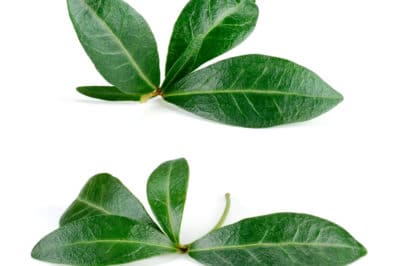Growing Pomegranates
Since pomegranates originated in the hot, dry climate of Iran, they grow best in similar areas, such as USDA Zones 8 to 10. However, some varieties are hardy in other areas in Zones 6 and 7. Not particular about soils as long as it drains well, pomegranates are sensitive to over-watering. Many need no more than an organic mulch for fertilizer. Prune suckers and to shape the shrub or tree.
Using Pomegranate Leaves as Food
Pomegranate leaves are edible. Choose only leaves that have not been sprayed and wash them well. Try these uses:
- Salads
- In a smoothie or juiced with fruits and vegetables
- As a spinach alternative
- Cooked in recipes such as curry, pasta sauce or soups
- To make pomegranate leaf tea.
Health Uses for Pomegranate Leaves
Many of the plants we use for fruits and vegetable have long-standing traditions in herbal medicine. Pomegranate leaves have been used for eczema – blenderize into a paste and apply to the skin. In Ayurvedic medicine, they are used to simulate the appetite and for digestive problems. Herbalists may also recommend a tea of pomegranate leaves to help with insomnia.
Pomegranate Leaf Drop
Pomegranates are deciduous and will normally lose their leaves in the fall. If your tree is dropping leaves out of season – especially if it’s a container plant – it could be root-bound. Although pomegranates are drought-tolerant, they may also lose leaves if starved for water – they shed their leaves to try to ensure survival of the tree, and may also drop flowers and/or fruit.
Pomegranate Leaf Curl
A healthy pomegranate leaf is flat and a glossy light green. When leaves curl, it signals a problem. Aphids may cause this problem because they suck the plant juices. Whiteflies, mealybugs, scale and leafrollers are also insect pests that can cause leaf curl. A healthy tree can easily withstand such attacks, so it’s better to live with a little damage than to reach for a spray.
Treating Leaf Drop and Leaf Curl
Dealing with leaf curl is simple once you identify the cause. Root-bound plants should be repotted. If lack of water is a problem, water more frequently. Natural predators like lacewings and ladybugs can help control insect pests. As a last resort, use an insecticidal soap sprayed directly on the insects. In all cases, make sure your trees are properly sited and well-cared for.
